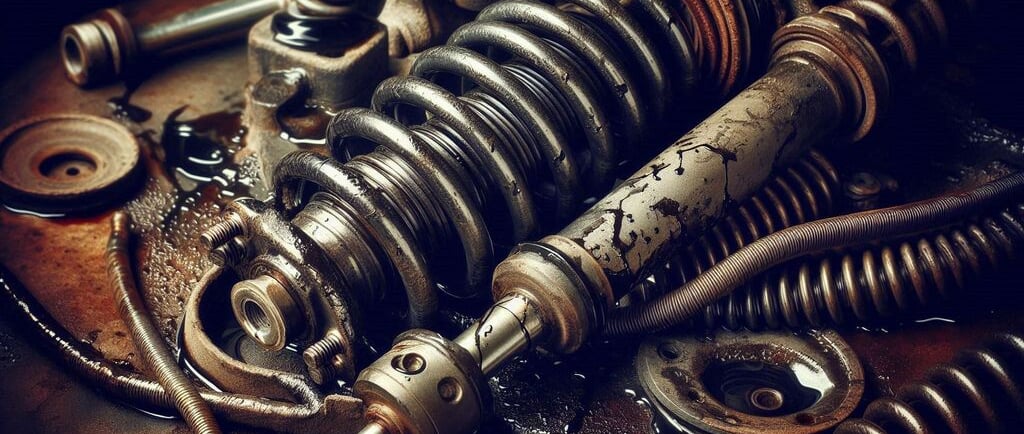Shock Absorbers and Struts
If you've ever driven down a bumpy road and felt every dip and bump, you can thank your shock absorbers and struts for making the experience more bearable.
SUSPENSION PARTS
11/14/20244 min read


Shock Absorbers and Struts: Key Components for a Smooth and Safe Ride
If you've ever driven down a bumpy road and felt every dip and bump, you can thank your shock absorbers and struts for making the experience more bearable. While these components often go unnoticed until there’s a problem, they play a crucial role in your vehicle’s comfort, handling, and safety. In this article, we’ll explore what shock absorbers and struts do, the differences between them, signs of wear, and why maintaining them is essential.
What Are Shock Absorbers?
Shock absorbers, often just called “shocks,” are hydraulic devices designed to control the impact and rebound of your vehicle’s springs and suspension. Simply put, they keep your car from bouncing excessively after hitting a bump by absorbing and dissipating the kinetic energy from road impacts. This ensures a smoother, more comfortable ride and helps maintain tire contact with the road, which is crucial for braking and steering.
Key Functions of Shock Absorbers
Reduce Bouncing: By absorbing the energy from road bumps, shocks minimize vehicle bouncing.
Control Body Roll: They help control body roll during turns, improving stability and handling.
Increase Tire Contact: By keeping tires in contact with the road, shocks contribute to better control, braking, and overall safety.
What Are Struts?
While shocks control bouncing and impact, struts are a structural component of your suspension system. They are more complex than shock absorbers because they serve a dual purpose: they act as a shock absorber and a structural support for your suspension. Struts carry a load-bearing role, connecting various parts of the suspension and steering, making them essential to both ride comfort and vehicle alignment.
Key Functions of Struts
Structural Support: Struts hold the suspension together and play a crucial role in supporting the vehicle's weight.
Impact Absorption: Similar to shocks, struts help absorb road impact, ensuring a smoother ride.
Alignment Control: Struts are integral to maintaining proper wheel alignment, affecting steering and tire wear.
Shock Absorbers vs. Struts: What’s the Difference?
While shocks and struts perform similar functions in absorbing road impact, they are not interchangeable. A vehicle will have either shocks or struts on each wheel, but not both. Struts serve both as a shock absorber and a structural part of the suspension, while shocks are purely designed to dampen road impact. Here’s a quick breakdown of the key differences:
Role in Suspension: Struts are structural and load-bearing; shocks are non-structural.
Cost and Replacement Complexity: Struts tend to be more expensive and complex to replace due to their role in the suspension system.
Vehicle Performance: Shocks focus on ride comfort; struts impact both ride comfort and vehicle alignment.
Signs Your Shocks and Struts Need Replacement
Just like any other vehicle component, shocks and struts wear out over time. Since they directly impact your driving experience and safety, it’s important to know the signs that it’s time for a replacement.
1. Excessive Bouncing or Bottoming Out
If you feel like your car is bouncing excessively after a bump or “bottoming out” on dips, this is a clear sign that your shocks or struts are worn out. Without proper damping, the suspension loses its ability to control the movement of the wheels.
2. Poor Steering Control or “Floating” Feeling
Worn shocks or struts can cause a “floating” sensation, especially when changing lanes or making turns. This lack of stability can make it difficult to steer, compromising safety.
3. Nose-Diving While Braking
If your car's front end dips down dramatically when you apply the brakes, it’s a good indication that your shocks or struts may need attention. This phenomenon, known as "nose-diving," reduces braking efficiency and can be hazardous.
4. Uneven Tire Wear
If you notice that your tires are wearing unevenly or more quickly than expected, it may be due to bad shocks or struts. When these components wear out, they can cause alignment issues, leading to uneven tire wear.
5. Visible Fluid Leaks
Shock absorbers and struts contain hydraulic fluid to help control impact and dampening. If you see fluid leaking around these components, it’s a sign that they may be nearing the end of their lifespan.
Why Replacing Shocks and Struts Matters
Replacing worn shocks and struts isn’t just about comfort—it’s also about safety. Worn-out shocks and struts can lead to poor handling, increased stopping distance, and even tire blowouts. They also impact other components in your suspension system, increasing the risk of costly repairs if left unaddressed. Here are some benefits of timely replacement:
Enhanced Stability and Control: New shocks and struts provide better handling and control, especially during turns and sudden maneuvers.
Shorter Braking Distance: By keeping your tires in contact with the road, they help reduce stopping distance.
Increased Tire Lifespan: Proper suspension maintenance helps avoid uneven tire wear, saving money on replacements.
Better Ride Comfort: Fresh shocks and struts restore smoothness, making for a more enjoyable drive.
How Often Should You Replace Shocks and Struts?
The lifespan of shocks and struts varies depending on factors like driving conditions and vehicle type, but most experts recommend replacing them every 50,000 to 100,000 miles. For those who frequently drive on rough terrain, it may be necessary to replace them sooner. Regular inspections during oil changes or tire rotations can help spot potential issues before they become severe.
Conclusion: Don’t Overlook Shocks and Struts
Your shock absorbers and struts are essential to your vehicle's performance and safety. They’re not just about comfort; they play a big role in stability, braking efficiency, and tire longevity. By keeping an eye out for signs of wear and scheduling regular maintenance, you can enjoy a smoother, safer ride—and avoid unexpected repair costs down the line.



